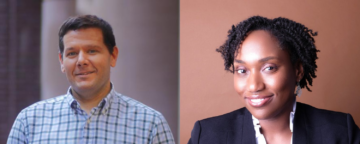The proportion of U.S. adults identifying themselves as Independent has grown significantly over the last four presidential elections, rivaling both major parties, according to a national study by the Annenberg Public Policy Center of the University of Pennsylvania.
The study, to be published in the March issue of Presidential Studies Quarterly and currently available online, compared data from nearly 30,000 interviews conducted during the 2000, 2004, 2008 and 2012 presidential campaigns. The interviews, conducted by phone during the Annenberg Public Policy Center’s National Annenberg Election Survey and the Institutions of Democracy 2012 Political Knowledge survey, asked people to identify their party affiliation, as well as to specify party leanings if they identified as Independent.
From 2008 to 2012 in battleground states, Republican affiliation decreased overall from 28.6 percent to 23.6 percent of voters, the study found. Between those years there was also a significant drop in Democratic identification in non-battleground states, from 36.7 percent to 32.1 percent. These shifts corresponded with large increases in Independent voters, who outnumbered Republicans and reached parity by 2012 with Democrats nationwide, rising from 28.9 percent in 2008 to 32.7 percent of voters in 2012. (The battleground states in presidential elections from 2000 to 2012 were defined as from 11 to 20 states in which the candidates actively campaigned, including such states as Florida, Ohio and Pennsylvania.)
The study is part of a growing body of evidence documenting the surge in Independent identification. Two polling organizations recently reported that in 2013, a year after the APPC survey, more than 40 percent of respondents identified themselves as Independent, more than either Republicans or Democrats. Gallup queried U.S. adults, while the McClatchy-Marist poll questioned registered voters.
The APPC study also reported that while Independent voters in 2000, 2004, and 2008 were more likely to lean Democratic than Republican, by 2012 they were as likely to lean toward one of the major parties as to the other.
“The biggest question going forward is why the gap closed and whether will we continue to see this in 2014,” says Ken Winneg, managing director of survey research at the Annenberg Public Policy Center, who co-authored the study with senior researcher Bruce Hardy and APPC Director Kathleen Hall Jamieson.

